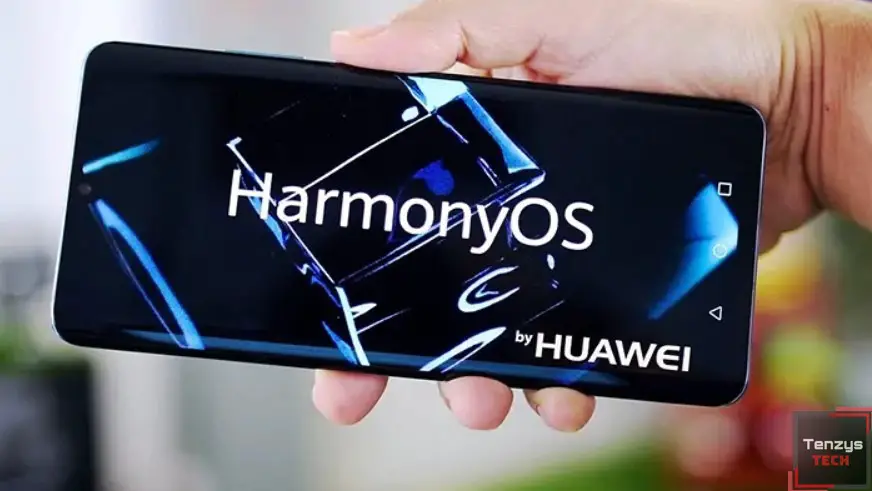Huawei has reported plans to pre-install its own Harmony operating system on its smartphones from one year from now.
The Chinese organization said it would also offer the software to different manufacturers to use as an option in contrast to Android.
Huawei is as of now the world’s second bestselling handset-producer, after a short time in the best position.
Be that as it may, others have attempted and neglected to challenge Google and Apple’s strength.
Google’s Android represented 85.4% of smartphones shipped last year, as per research organization IDC, and Apple’s iOS the staying 14.6%.
What’s more, those figures mirror the reality Samsung’s Tizen, Amazon’s FireOS, Microsoft’s Windows Phone, and Canonical’s Ubuntu have all neglected to make progress on handsets.
Huawei’s move has been incited by the reality it can not, at this point offer Google’s apps and services on its latest devices, because of a US embargo – despite the fact that the restriction does not keep it from offering Android itself.
Inside China – where consumers don’t use the Google Play store and a large number of Google’s services are hindered – this constraint has not caused Huawei problems.
Be that as it may, in different countries, interest for its most ongoing phones has been feeble because Google’s tools are mainstream.
One master said the destiny of the new operating system may rely upon what number of other innovation companies Huawei persuaded to come ready.
“This move will be supported by the Chinese government because it fits into its more extensive Made In China 2025 strategy,” Marta Pinto, from IDC, said.
“In any case, it will possibly take off elsewhere if other Chinese vendors, such as Xiaomi and Oppo, embrace it.
“And still, at the end of the day, it will still be a test in geographies like Western Europe and Latin America, where so numerous individuals and businesses depend on Google’s products.”
Harmony 2.0 SDK and released open source code
Huawei has declared the second version of its HarmonyOS operating system and point by point plans to carry it to a more extensive scope of devices, including smartphones. Consumer business CEO Richard Yu made the declaration day before yesterday at Huawei’s designer gathering in Shenzhen, China.
Huawei will make a beta version of the HarmonyOS 2.0 SDK accessible to developers day before yesterday, however it’ll at first just support smartwatches, vehicle head units, and TVs. A smartphone version of the SDK will follow in December 2020, and Yu indicated that phones running HarmonyOS may show up one year from now.

Huawei is also commencing its OpenHarmony venture, which allows developers to expand upon an open-source version of the OS — similar to what AOSP is to Android. As per as of late updates, the task just supports devices with 128MB of RAM or beneath, yet that will grow to 4GB in April of one year from now, and as far as possible will be taken out totally by October 2021.

HarmonyOS is a strategically significant venture for Huawei, as it could serve as a rampart against sanctions restricting the Chinese monster from working with American companies. Huawei is right now compelled to ship its Android-based phones without Google services, devastating its application ecosystem and usefulness for users outside China.
Harmony OS runs parallel to EMUI

Huawei declared its arrangement toward the start of a three-day designer meeting close to the city of Shenzhen.The first version of Harmony OS was disclosed a year prior, when it was contributed for use smartwatches, TVs and other smart home gadgets.
Yet, the organization presently intends to release a fresh version – Harmony OS 2.0 – that can be tested on handsets from December, in front of a conventional dispatch in October 2021.
In parallel, it will shortly release EMUI 11 – a version of its cell phone user interface based on Android 11.
After October, some of its smartphone models will be offered with Harmony OS.
However, it will keep on offering EMUI as another option.
Challenges for Harmony OS
Some portion of Huawei’s test is it will require developers to code their apps specifically for Harmony if the software is to run locally and thus get the best performance.The organization has demonstrated it will be generally easy to recode apps effectively composed for Android.However, this has demonstrated a sticking point for other bombed operating-system challengers.Developers either chose the additional work was not justified, despite any potential benefits or didn’t focus on it, which means the apps normally came up short on the latest features accessible on Android and iOS.
Huawei is as of now taking on an exceptionally intense conflict, especially with the American government. It is confronting different bans that are influencing its business. Since the start of last year, all Huawei new phones don’t accompany Google Mobile Service. This means no PlayStore, no Gmail, and numerous different apps. Furthermore, it can no longer depend on TSMC to maker its HiSilicon Kirin chips. This is as a result of the all-inclusive boycott which the U.S. government imposed.
As per Yu Chengdong, Huawei will release the Huawei Mate 40 series with Kirin chips in September this year. Nonetheless, this might be the last phone that will use Kirin’s flagship processor. TSMC can not deal with Huawei Kirin chips after September 15. This means no new Kirin flagship can hit the market. As per Yu Chengond, the Mate 40 series will exhaust all the flagship Kirin chips. This is a major loss for Huawei.


